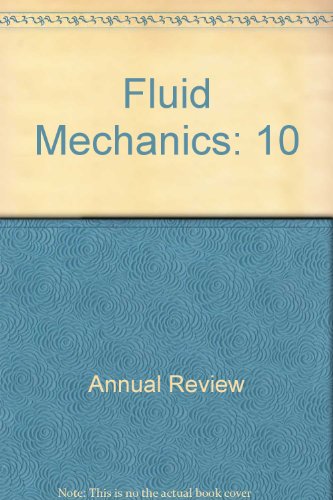X-Ray Flow Visualization in Multiphase Flows
IF 25.4
1区 工程技术
Q1 MECHANICS
引用次数: 18
Abstract
The use of X-ray flow visualization has brought a powerful new tool to the study of multiphase flows. Penetrating radiation can probe the spatial concentration of the different phases without the refraction, diffraction, or multiple scattering that usually produce image artifacts or reduce the signal-to-noise ratio below reliable values in optical visualization of multiphase flows; hence, X-ray visualization enables research into the three-dimensional (3D) structure of multiphase flows characterized by complex interfaces. With the commoditization of X-ray laboratory sources and wider access to synchrotron beam time for fluid mechanics, this novel imaging technique has shed light onto many multiphase flows of industrial and environmental interest under realistic 3D configurations and at realistic operating conditions (high Reynolds numbers and high volume fractions) that had defied study for decades. We present a broad survey of the most commonly studied multiphase flows (e.g., sprays, fluidized beds, bubble columns) in order to highlight the progress X-ray imaging has made in understanding the internal structure and multiphase coupling of these flows, and we discuss the potential of advanced tomography and time-resolved and particle tracking radiography for further study of multiphase flows.多相流中的X射线流可视化
X射线流动可视化的应用为多相流的研究带来了一个强大的新工具。穿透辐射可以探测不同相的空间浓度,而不会产生折射、衍射或多重散射,这些通常会产生图像伪影,或在多相流的光学可视化中将信噪比降低到可靠值以下;因此,X射线可视化能够研究以复杂界面为特征的多相流的三维(3D)结构。随着X射线实验室源的商品化和流体力学同步加速器束时间的广泛使用,这项新的成像技术揭示了在现实的3D配置和现实的操作条件下(高雷诺数和高体积分数)的许多工业和环境感兴趣的多相流,这些都是几十年来难以研究的。我们对最常研究的多相流(如喷雾、流化床、气泡柱)进行了广泛的调查,以突出X射线成像在理解这些流的内部结构和多相耦合方面取得的进展,并讨论了先进的层析成像、时间分辨和粒子跟踪射线照相在进一步研究多相流方面的潜力。
本文章由计算机程序翻译,如有差异,请以英文原文为准。
求助全文
约1分钟内获得全文
求助全文
来源期刊
CiteScore
54.00
自引率
0.40%
发文量
43
期刊介绍:
The Annual Review of Fluid Mechanics is a longstanding publication dating back to 1969 that explores noteworthy advancements in the field of fluid mechanics. Its comprehensive coverage includes various topics such as the historical and foundational aspects of fluid mechanics, non-newtonian fluids and rheology, both incompressible and compressible fluids, plasma flow, flow stability, multi-phase flows, heat and species transport, fluid flow control, combustion, turbulence, shock waves, and explosions.
Recently, an important development has occurred for this journal. It has transitioned from a gated access model to an open access platform through Annual Reviews' innovative Subscribe to Open program. Consequently, all articles published in the current volume are now freely accessible to the public under a Creative Commons Attribution (CC BY) license.
This new approach not only ensures broader dissemination of research in fluid mechanics but also fosters a more inclusive and collaborative scientific community.

 求助内容:
求助内容: 应助结果提醒方式:
应助结果提醒方式:


